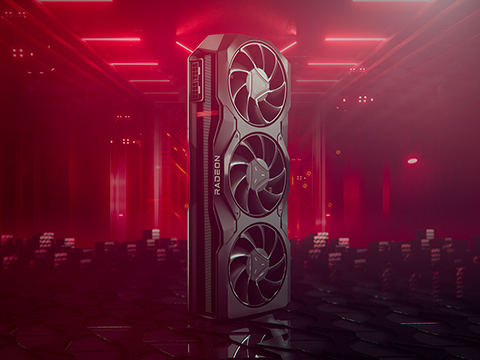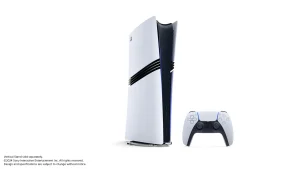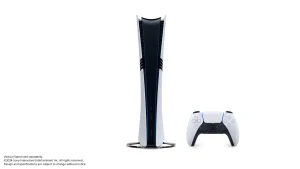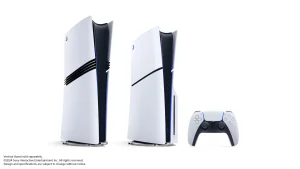Tech
AMD Radeon RX 7900 XTX and AMD Radeon RX 7900 XT Review: High-end RDNA 3 GPUs for 4K gaming that don’t break the bank

The new Navi 31 GPUs — the Radeon RX 7900 XTX and the Radeon RX 7900 XT — are based on AMD’s latest RDNA 3 architecture. The Radeon RX 7900 XTX uses the full graphics Navi 31 chip configuration, which results in a total of 6,144 stream processors (SPs). The smaller RX 7900 XT is no slouch with 5,376 SPs under the hood.
Compared to RDNA 2, the RDNA 3 architecture has undergone a complete revision. The new multi-chip module (MCM) package now combines six memory cache dies (MCDs) and a graphics compute die (GCD) in the RX 7900 XTX. The manufacturing process has now shifted to a smaller node compared to RDNA 2, but this does not result in any significant changes in the clock rates.
In addition to the revamped ray tracing units, which now include up to 96 ray accelerators, there are also 192 AI units. However, these do not yet match up to the raw performance afforded by Nvidia’s tensor cores. AMD is very generous when it comes to VRAM capacities and equips the top model with 24 GB of GDDR6 memory. This is mostly on par with the Nvidia GeForce RTX 4090. The RX 7900 XT makes do with 20 GB GDDR6 but is at a slight advantage compared to the Nvidia GeForce RTX 4080, as the second-fastest Ada GPU only offers 16 GB of VRAM.
The media engine has also been revised and AV1 is supported on the hardware side for both encoding and decoding. AMD embraces the latest DisplayPort 2.1 connectivity standard, which Nvidia has omitted from its RTX 4000 models. In total, up to four displays can be operated simultaneously on the Radeon RX 7900 XTX and the Radeon RX 7900 XT.
The test samples here are reference models from AMD. Both the cards are equipped with a 2.5-slot cooler, which uses three axial fans. However, unlike the RTX 4090 and RTX 4080 Founders Edition cards, the cooling unit differs between the two RDNA 3 cards.
The new graphics cards are also significantly smaller than the RTX 4090, so there should be fewer problems accommodating them in compact PCs. Many users will probably breathe a sigh of relief when it comes to power supply connections — AMD sticks to the tried and tested 6+2 pin connectors on both models.
An AMD Ryzen 9 7950X platform based on the Gigabyte X670E Aorus Master serves as our test system for this review. The CPU is ably cooled by the Alphacool Eisbear Aurora 360 AiO cooler. The 32 GB DDR5-6000 RAM comes from G.Skill and is operated with the appropriate EXPO profile. We used the Gigabyte M32U as the monitor of choice.
The complete system specs include:
- Lian-Li O11 Dynamic case
- AMD Ryzen 9 7950X
- Gigabyte X670E Aorus Master, BIOS: F8a
- Alphacool Eisbear 360 AiO cooler
- Corsair RM 1000x PSU
- G.Skill Trident Z5 Neo DDR5-6000 2x 16 GB, EXPO (DDR5-6000 CL30-38-38-96)
- Corsair MP600 2 TB
- Crucial MX500 2 TB
- Microsoft Windows 11 Professional 64-Bit (Version 22H2)
A beta Adrenalin Edition driver version 22.40.00.57 was made available to us for testing the AMD Radeon RX 7900 XTX and the RX 7900 XT. All gaming tests were performed in the native resolution. Upscaling features like FSR were not used.
In synthetic tests, the Radeon RX 7900 XTX places itself just ahead of the RTX 4080, but Nvidia’s flagship RTX 4090 remains unmatched with a 21% lead. Compared to the AMD Radeon RX 6950 XT, we see a 35% increase in cumulative performance. AMD’s second-fastest model is at a respectable 10% distance behind the RTX 4080. The performance gain relative to the previous top-end model from Team Red is still significant at 16%.
We do notice discrepancies with the Radeon 7000 LuxMark scores. This could be due to a compute unit scaling limitation with the benchmark. Either that, or there could be an issue with the beta Adrenalin drivers not playing well here.
AMD cards have traditionally offered more performance in SPECviewperf tests compared to Nvidia’s consumer offerings. The new RDNA 3 graphics cards take things a notch higher, by leaving behind even the driver-optimized Nvidia RTX A6000 and Titan RTX cards, and definitely the newer Ada GPUs.
That being said, it helps to evaluate the card’s performance for your required workload. For instance, the RTX 4090 does have an edge over the RX 7900 XTX in 3D workflows such as Maya, Showcase, and 3Ds Max. Of course, those into CUDA-dependent workflows have no option but to choose Nvidia’s offerings over AMD’s.
Let’s be upfront here. AMD cannot beat Nvidia’s flagship GPU when it comes to pure raster gaming performance. Depending on the game, resolution, and quality settings, the performance differences between the Ada and RDNA 3 flagships can vary significantly. But there’s more to the equation.
Although Nvidia does have leads at 4K, 2K, and 1080p Ultra settings, both AMD RX 7900 cards are perfectly suitable for 4K 100 fps gaming in many titles. As a note, it should also be mentioned that the manufacturer has only provided a beta driver for the preliminary tests so far. AMD has repeatedly proven with past graphics cards that driver updates can afford perceivable performance gains down the line.
AMD’s FSR 2 upscaling technology is also finding increasing acceptance among game developers, and we will also get to see FSR 3 incorporating frame generation tech in just a few months from now.
We observe ray tracing performance increases significantly by up to 50% compared to RDNA 2 with RDNA 3’s second generation ray tracing accelerators.
That being said, AMD still lags behind compared to Nvidia in this aspect overall. We will update this review with more ray tracing benchmarks shortly for a more holistic comparison.
The AMD Radeon RX 7900 series is able to convince with a clearly noticeable increase in performance. The TBPs of 355 W and 315 W for the RX 7900 XTX and the RX 7900 XT, respectively, are only slightly higher than their RDNA 2 predecessors. The total system power consumption is about 8% less compared to a Radeon RX 6950 XT-based PC.
Having said that, the RX 7900 XTX is comparable to the GeForce RTX 4090’s energy consumption when gaming. The likely reason could be that the CPU can quickly bottleneck and slow down the high-performing RTX 4090, particularly at 1080p, which isn’t the case with the RX 7900 XTX.
The tables turn during FurMark stress test with the Radeon RX 7900 XTX-based system consuming 15% less power than the one with an RTX 4090. We measured a high energy requirement with the RX 7900 XT even though specifications indicate a maximum of 315 W TBP for the graphics card.
The cooling design of the Radeon RX 7900 graphics cards is visually reminiscent of the 6000 series. AMD continues to rely on vapor chamber cooling with three axial fans. In practice, both the cards have tolerable emissions even under full load with the temperatures remaining under critical regions.
We see a maximum of 86 °C as the GPU hotspot value for the XTX model. The GPU throttles only above 110 °C, which can result in performance loss. Meanwhile, the VRAM gets a bit warmer reaching 94 °C in the stress test. In the XT model, we see similarly high temperatures with the VRAM, although the GPU performs works consistently cooler than its bigger cousin.
It is possible to increase the power target by up to 15% on both models. However, due to the specifications and the already high power consumption, we advise against operating these graphics cards outside their specifications.
Nvidia scored a home run by setting a high bar with its latest Ada Lovelace-based GPUs, such as the GeForce RTX 4090 and RTX 4080. AMD’s RDNA 3 announcement was awaited with bated breath by the press and gamers alike to see how Team Red would respond in terms of performance. Now, we are able to finally evaluate flagship RDNA 3 cards of the likes of the Radeon RX 7900 XTX and the Radeon RX 7900 XT and see for ourselves how the latest GPUs stack up to each other.
Our findings show that AMD has substantially improved performance vis-à-vis RDNA 2, even though it’s the absolute best we’ve seen yet. The new cards are able competitors to the RTX 4080, with Nvidia’s second best Ada card at times getting sandwiched between the RX 7900 XT and the RX 7900 XTX. While the RX 7900 XTX does fare well against the RTX 4080, the RX 7900 XT takes on the RTX 3080 Ti.
With the Radeon RX 7900 XTX and RX 7900 XT, AMD has significantly upped the ante with its high-end GPUs without raising the TGP to absurd levels. These RDNA 3 GPUs now present an incredibly exciting prospect thanks to their good performance and significantly more attractive pricing.
With an MSRP of US$999 (~€1,149) and US$899 (~€1,049) for the RX 7900 XTX and the RX 7900 XT, respectively, AMD veers away from Nvidia’s habit of ridiculously high launch MSRPs. The Nvidia GeForce RTX 4080 and 4090 Founders Edition cards still retail for US$1,199 and US$1,599, respectively, so they are clearly in for some much-needed price cuts. AMD definitely has an edge in this regard, since the higher-end RX 7900 XTX is still less expensive while also being faster overall.
But what good is a worthwhile graphics card when it is out of stock? Poor availability has already been a problem since the launch of the GeForce RTX 4090. Time will tell whether AMD’s attempts to fill up the shelves of retailers before the impending launch tomorrow is successful. On a similar note, it will be interesting to see how Nvidia reacts to the pricing, performance, and performance-per-dollar salvo from the new RDNA 3 GPUs.
With many innovations and much-improved overall feature set, the AMD Radeon RX 7900 XTX and RX 7900 XT are great products for playing all kinds of modern AAA games. Furthermore, the potential increase in performance in the form of better drivers that was often observed in the past gives us hope that this trend will also continue with the current GPU lineup. In addition, upscaling technologies such as FSR 2.0 will become increasingly important in the future with more and more game developers looking to implementing this feature in their games.
In times of energy consumption, we welcome the fact that AMD doesn’t pump up to 450 W into the graphics card like Nvidia does. Compared to the AMD Radeon RX 6950 XT, however, the efficiency has been increased significantly. Nevertheless, we are still critical of the general trend of increasing power consumption in modern graphics cards, given the fact that higher TBP values can be seen again and again from generation to generation.
Over the next few days, we will expand this review with additional benchmarks. This primarily includes additional gaming and ray tracing benchmarks along with noise emission data.
Do let us know if you have any suggestions, and we will try our best to include them if possible.
Tech
How to Preorder the PlayStation 5 Pro in Canada

Sony has made it easy for Canadian consumers to preorder the PlayStation 5 Pro in Canada directly from PlayStation’s official website. Here’s how:
- Visit the Official Website: Go to direct.playstation.com and navigate to the PS5 Pro section once preorders go live on September 26, 2024.
- Create or Log in to Your PlayStation Account: If you don’t have a PlayStation account, you will need to create one. Existing users can simply log in to proceed.
- Place Your Preorder: Once logged in, follow the instructions to preorder your PS5 Pro. Ensure you have a valid payment method ready and double-check your shipping information for accuracy.
Preorder Through Major Canadian Retailers
While preordering directly from PlayStation is a popular option, you can also secure your PS5 Pro through trusted Canadian retailers. These retailers are expected to offer preorders on or after September 26:
- Best Buy Canada
- Walmart Canada
- EB Games (GameStop)
- Amazon Canada
- The Source
Steps to Preorder via Canadian Retailers:
- Visit Retailer Websites: Search for “PlayStation 5 Pro” on the website of your preferred retailer starting on September 26.
- Create or Log in to Your Account: If you’re shopping online, having an account with the retailer can speed up the preorder process.
- Preorder in Store: For those who prefer in-person shopping, check with local stores regarding availability and preorder policies.
3. Sign Up for Notifications
Many retailers and websites offer the option to sign up for notifications when the preorder goes live. If you’re worried about missing out due to high demand, this can be a useful option.
- Visit Retailer Sites: Look for a “Notify Me” or “Email Alerts” option and enter your email to stay informed.
- Use PlayStation Alerts: Sign up for notifications directly through Sony to be one of the first to know when preorders are available.
4. Prepare for High Demand
Preordering the PS5 Pro is expected to be competitive, with high demand likely to result in quick sellouts, just as with the initial release of the original PS5. To maximize your chances of securing a preorder:
- Act Quickly: Be prepared to place your order as soon as preorders open. Timing is key, as stock can run out within minutes.
- Double-Check Payment Information: Ensure your credit card or payment method is ready to go. Any delays during the checkout process could result in losing your spot.
- Stay Informed: Monitor PlayStation and retailer websites for updates on restocks or additional preorder windows.
Final Thoughts
The PlayStation 5 Pro is set to take gaming to the next level with its enhanced performance, graphics, and new features. Canadian gamers should be ready to act fast when preorders open on September 26, 2024, to secure their console ahead of the holiday season. Whether you choose to preorder through PlayStation’s official website or your preferred retailer, following the steps outlined above will help ensure a smooth and successful preorder experience.
For more details on the PS5 Pro and to preorder, visit direct.playstation.com or stay tuned to updates from major Canadian retailers.
Tech
Introducing the PlayStation 5 Pro: The Next Evolution in Gaming

Since the PlayStation 5 (PS5) launched four years ago, PlayStation has continuously evolved to meet the demands of its players. Today, we are excited to announce the next step in this journey: the PlayStation 5 Pro. Designed for the most dedicated players and game creators, the PS5 Pro brings groundbreaking advancements in gaming hardware, raising the bar for what’s possible.
Key Features of the PS5 Pro
The PS5 Pro comes equipped with several key performance enhancements, addressing the requests of gamers for smoother, higher-quality graphics at a consistent 60 frames per second (FPS). The console’s standout features include:
- Upgraded GPU: The PS5 Pro’s GPU boasts 67% more Compute Units than the current PS5, combined with 28% faster memory. This allows for up to 45% faster rendering speeds, ensuring a smoother gaming experience.
- Advanced Ray Tracing: Ray tracing capabilities have been significantly enhanced, with reflections and refractions of light being processed at double or triple the speed of the current PS5, creating more dynamic visuals.
- AI-Driven Upscaling: Introducing PlayStation Spectral Super Resolution, an AI-based upscaling technology that adds extraordinary detail to images, resulting in sharper image clarity.
- Backward Compatibility & Game Boost: More than 8,500 PS4 games playable on PS5 Pro will benefit from PS5 Pro Game Boost, stabilizing or enhancing performance. PS4 games will also see improved resolution on select titles.
- VRR & 8K Support: The PS5 Pro supports Variable Refresh Rate (VRR) and 8K gaming for the ultimate visual experience, while also launching with the latest wireless technology, Wi-Fi 7, in supported regions.
Optimized Games & Patches
Game creators have quickly embraced the new technology that comes with the PS5 Pro. Many games will receive free updates to take full advantage of the console’s new features, labeled as PS5 Pro Enhanced. Some of the highly anticipated titles include:
- Alan Wake 2
- Assassin’s Creed: Shadows
- Demon’s Souls
- Dragon’s Dogma 2
- Final Fantasy 7 Rebirth
- Gran Turismo 7
- Marvel’s Spider-Man 2
- Ratchet & Clank: Rift Apart
- Horizon Forbidden West
These updates will allow players to experience their favorite games at a higher fidelity, taking full advantage of the console’s improved graphics and performance.






Design & Compatibility
Maintaining consistency within the PS5 family, the PS5 Pro retains the same height and width as the original PS5 model. Players will also have the option to add an Ultra HD Blu-ray Disc Drive or swap console covers when available.
Additionally, the PS5 Pro is fully compatible with all existing PS5 accessories, including the PlayStation VR2, DualSense Edge, Pulse Elite, and Access controller. This ensures seamless integration into your current gaming setup.
Pricing & Availability
The PS5 Pro will be available starting November 7, 2024, at a manufacturer’s suggested retail price (MSRP) of:
- $699.99 USD
- $949.99 CAD
- £699.99 GBP
- €799.99 EUR
- ¥119,980 JPY
Each PS5 Pro comes with a 2TB SSD, a DualSense wireless controller, and a copy of Astro’s Playroom pre-installed. Pre-orders begin on September 26, 2024, and the console will be available at participating retailers and directly from PlayStation via direct.playstation.com.
The launch of the PS5 Pro marks a new chapter in PlayStation’s commitment to delivering cutting-edge gaming experiences. Whether players choose the standard PS5 or the PS5 Pro, PlayStation aims to provide the best possible gaming experience for everyone.
Preorder your PS5 Pro and step into the next generation of gaming this holiday season.
Tech
Google Unveils AI-Powered Pixel 9 Lineup Ahead of Apple’s iPhone 16 Release
Google has launched its next generation of Pixel phones, setting the stage for a head-to-head competition with Apple as both tech giants aim to integrate more advanced artificial intelligence (AI) features into their flagship devices. The unveiling took place near Google’s Mountain View headquarters, marking an early debut for the Pixel 9 lineup, which is designed to showcase the latest advancements in AI technology.
The Pixel 9 series, although a minor player in global smartphone sales, is a crucial platform for Google to demonstrate the cutting-edge capabilities of its Android operating system. With AI at the core of its strategy, Google is positioning the Pixel 9 phones as vessels for the transformative potential of AI, a trend that is expected to revolutionize the way people interact with technology.
Rick Osterloh, Google’s senior vice president overseeing the Pixel phones, emphasized the company’s commitment to AI, stating, “We are obsessed with the idea that AI can make life easier and more productive for people.” This echoes the narrative Apple is likely to push when it unveils its iPhone 16, which is also expected to feature advanced AI capabilities.
The Pixel 9 lineup will be the first to fully integrate Google’s Gemini AI technology, designed to enhance user experience through more natural, conversational interactions. The Gemini assistant, which features 10 different human-like voices, can perform a wide array of tasks, particularly if users allow access to their emails and documents.
In an on-stage demonstration, the Gemini assistant showcased its ability to generate creative ideas and even analyze images, although it did experience some hiccups when asked to identify a concert poster for singer Sabrina Carpenter.
To support these AI-driven features, Google has equipped the Pixel 9 with a special chip that enables many AI processes to be handled directly on the device. This not only improves performance but also enhances user privacy and security by reducing the need to send data to remote servers.
Google’s aggressive push into AI with the Pixel 9 comes as Apple prepares to unveil its iPhone 16, which is expected to feature its own AI advancements. However, Google’s decision to offer a one-year free subscription to its advanced Gemini Assistant, valued at $240, may pressure Apple to reconsider any plans to charge for its AI services.
The standard Pixel 9 will be priced at $800, a $100 increase from last year, while the Pixel 9 Pro will range between $1,000 and $1,100, depending on the model. Google also announced the next iteration of its foldable Pixel phone, priced at $1,800.
In addition to the new Pixel phones, Google also revealed updates to its Pixel Watch and wireless earbuds, directly challenging Apple’s dominance in the wearable tech market. These products, like the Pixel 9, are designed to integrate seamlessly with Google’s AI-driven ecosystem.
Google’s event took place against the backdrop of a significant legal challenge, with a judge recently ruling that its search engine constitutes an illegal monopoly. This ruling could lead to further court proceedings that may force Google to make significant changes to its business practices, potentially impacting its Android software or other key components of its $2 trillion empire.
Despite these legal hurdles, Google is pressing forward with its vision of an AI-powered future, using its latest devices to showcase what it believes will be the next big leap in technology. As the battle for AI supremacy heats up, consumers can expect both Google and Apple to push the boundaries of what their devices can do, making the choice between them more compelling than ever.
-

 News14 hours ago
News14 hours agoB.C. to scrap consumer carbon tax if federal government drops legal requirement: Eby
-

 Sports15 hours ago
Sports15 hours agoLawyer says Chinese doping case handled ‘reasonably’ but calls WADA’s lack of action “curious”
-

 News14 hours ago
News14 hours agoA linebacker at West Virginia State is fatally shot on the eve of a game against his old school
-

 Sports9 hours ago
Sports9 hours agoCanada’s Marina Stakusic advances to quarterfinals at Guadalajara Open
-

 News14 hours ago
News14 hours agoHall of Famer Joe Schmidt, who helped Detroit Lions win 2 NFL titles, dies at 92
-

 News15 hours ago
News15 hours agoRCMP say 3 dead, suspects at large in targeted attack at home in Lloydminster, Sask.
-
News24 hours ago
Local Toronto business story – Events Industry : new national brand, Element Event Solutions
-

 News15 hours ago
News15 hours agoProvinces decry Ottawa’s plan to resettle asylum seekers across the country



















